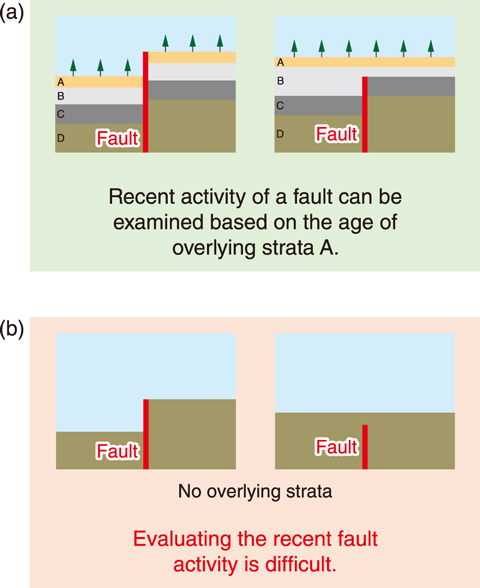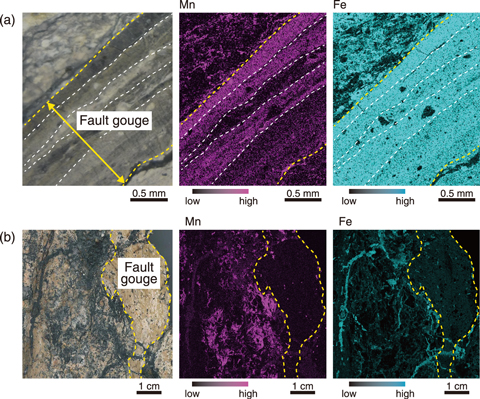
Fig.8-16 Identification of recent fault activity (a) with and (b) without overlying strata

Fig.8-17 Photographs of polished sample surfaces and X-ray microscopy images showing spatial distribution of Mn and Fe from fault gouges of (a) capable and (b) incapable faults
A fault, which is a fracture in a rock mass that has experienced displacement and can generate earthquakes, is classified as a capable or incapable fault based on the existence of any displacement over the past several hundred millennia. Identification of capable faults is crucial for reliable seismic hazard assessments and for assessing the safety of geological disposal, as they are considered to have a significant potential for displacement in the near future. Generally, recent fault activity is identified based on the occurrence of any displacement in the strata overlying the fault. However, when such overlying strata are absent or when faults are newly found during underground tunnel excavation, alternative methods for identifying fault activity are needed (see Fig.8-16).
Faults are generally associated with a fracture zone, i.e., a zone with numerous fractures and/or breccia. A fracture zone often includes a clay-rich “fault gouge” developed by grain-size reduction owing to repetitive fragmentation and clay mineral formation caused by water–rock interaction during faulting. In this study, the mineral and chemical compositions of fault gouges from known capable and incapable faults were analyzed using multiple approaches such as X-ray diffraction and X-ray fluorescence analyses. Consequently, elemental mapping for polished sample surfaces using an X-ray analytical microscope revealed that the concentrations of several elements such as manganese (Mn) and iron (Fe) in fault gouges were clearly different between capable and incapable faults (see Fig.8-17).
Mn and Fe, discovered to be concentrated in the gouges of capable fault, can form oxides that are insoluble in water. A fault gouge is generally impermeable because it is filled with fine-grained fragments and clay minerals. However, groundwater can migrate into the gouge of a capable fault when fault activity causes the formation of new fractures. As water from deep underground is reductive, Mn and Fe remain dissolved in the water. The migration of the reductive water to the subsurface during faulting results in its mixing with near-surface water that is rich in oxygen, leading to the subsequent precipitation of insoluble Mn and Fe oxides in the fault gouge.
In contrast, as a fault gouge of an incapable fault remains impermeable, no opportunities for the concentration of Mn and Fe are presented. These findings will aid in the identification of capable faults using chemical signatures as well as the structures and mineralogical characteristics of faults, especially when geological features formed by recent near-surface faulting are obscured due to the absence of overlying strata.
(Masakazu Niwa)